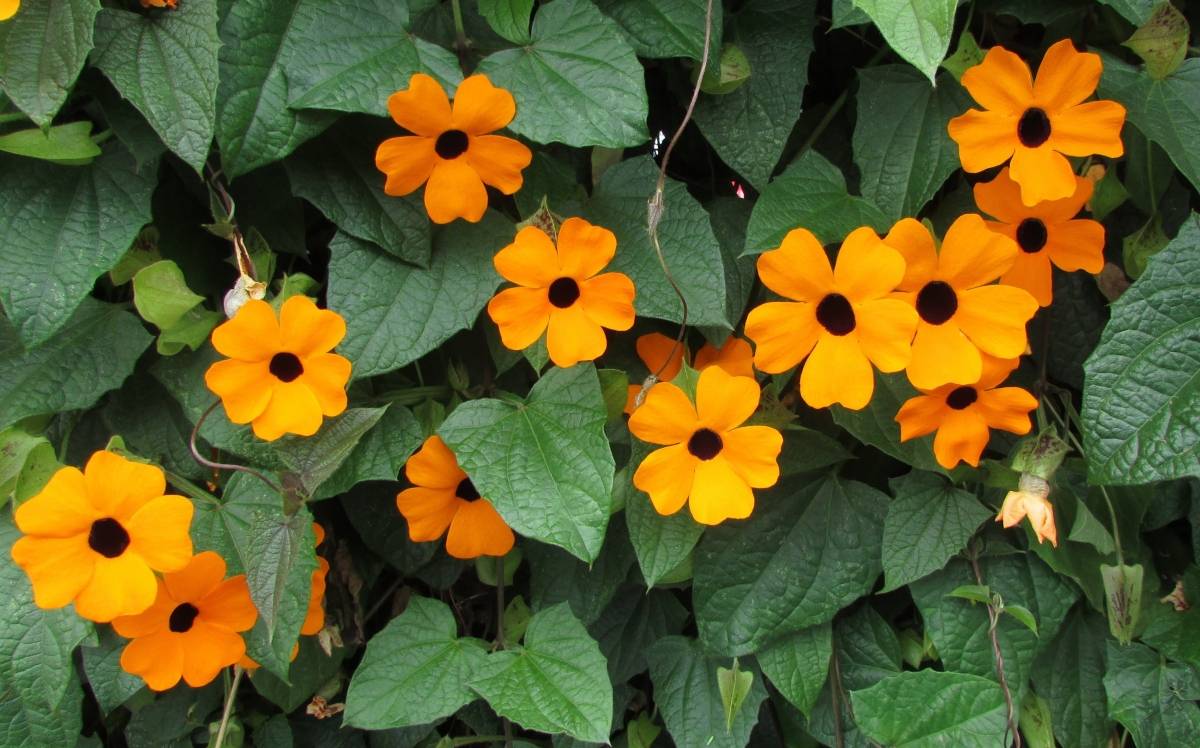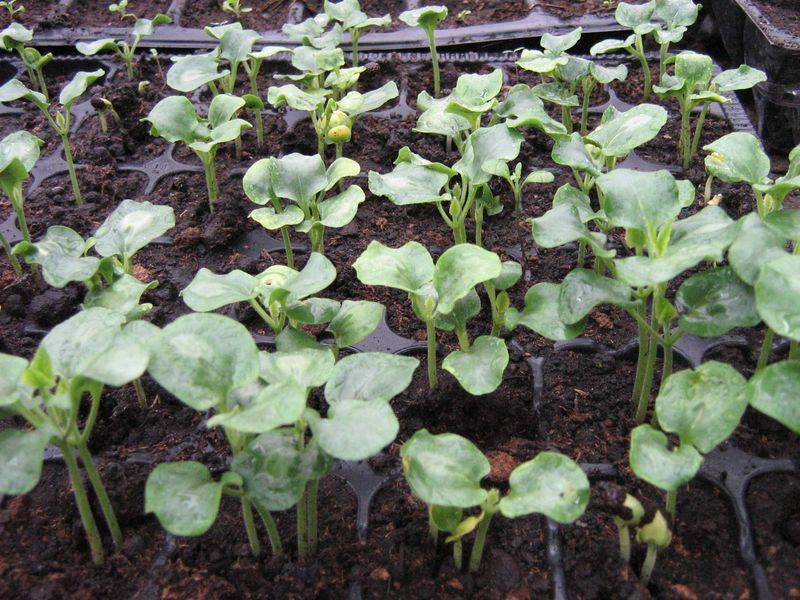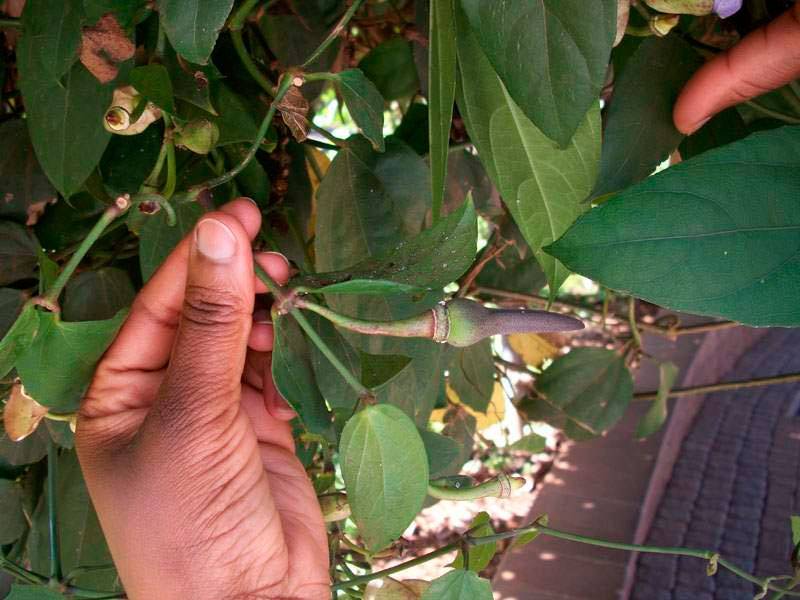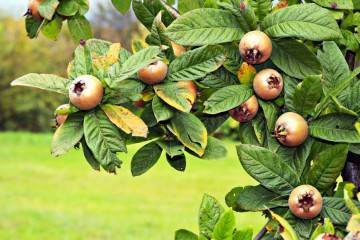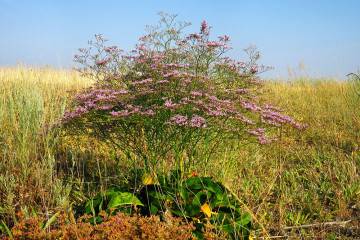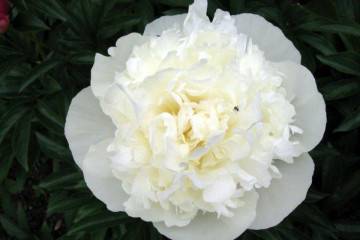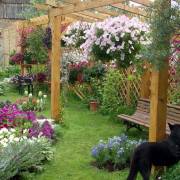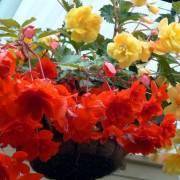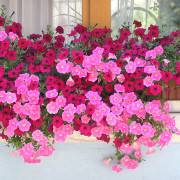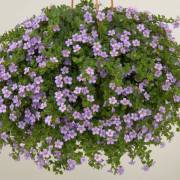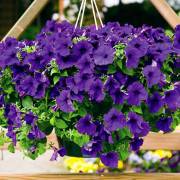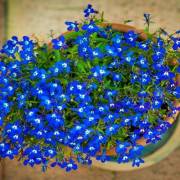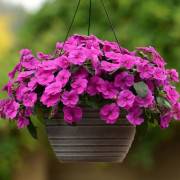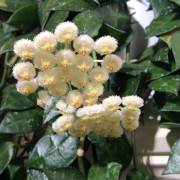Thunbergia growing vines in pots and in the garden
Content:
In natural conditions, tunbergia covers rocky slopes or tree trunks with a solid green carpet. But it is not difficult to grow it in the garden too. The plant adapts well to growing at home, grows quickly and blooms beautifully. Therefore, it can be used to mask unsightly walls or decorate balconies.
Brief description of the plant
The birthplace of Tunbergia is Africa and South Asia. The plant got to Europe thanks to botanist Karl Peter Thunberg. The flower belongs to the acanthus family. It is a vine that can grow up to 2-3 m in length. One plant can have several branched terrestrial shoots.
Tunbergia leaves are oval or heart-shaped, usually bright green in color and with small embossed veins. On a leaf blade, the edge can be smooth or jagged; there is a slight pubescence on the reverse side.
On flexible peduncles, axillary single flowers with five wide petals and a dark fluffy core are formed. The color of the petals is very diverse - yellow, orange, blue, white, red, pink. The calyx can be up to 4 cm in diameter.
The main types of plants
More than 100 plant species belong to the genus Tunbergia. But in culture, only the most interesting of them are used:
- Winged Tunbergia (Thunbergia alata) is a liana up to 1.5 m high. It can grow up to one meter wide.
- Tunbergia grandiflora (Thunbergia grandiflora). This species includes tunbergia grandiflora, blue tunbergia with inflorescences of a pale blue color and with a yellow border inside.
- Thunbergia fragrans has white flowers with a very pleasant aroma.
- Thunbergia battiscombei. She has blue inflorescences, and wide leaves of light green color.
- Tunbergia Bicolor is an upright plant.
Popular varieties
The cultivated species of tunbergia are represented by many varieties. The most popular ones are:
- Black-eyed Suzanne is distinguished by yellow inflorescences, in the center there is a black speck.
- Susie's series. The color of flowers in this series can be different. There are varieties with white, yellow and orange petals.
- Gregora is a mix of 15 varieties. All inflorescences of these varieties are orange.
- The minstrel has white petals with a black eye in the center.
- African Sunset. Flowers of the African Sunset terracotta variety. Flowering is long lasting all summer.
- Sunny Lemon Star features rich yellow petals.
- Superstar orange. This variety has a rich orange inflorescence with a black eye in the center.
Thunbergia: growing by seeds and seedlings
Sowing seeds is best in late February and early March. To do this, you should choose a spacious container, which is filled with soil prepared from leafy earth, sand and humus. All ingredients are taken in equal parts.
Seeds are scattered over the surface of the soil and lightly sprinkled on top with the same soil, watered and covered with a film. Several times a week, the film is removed to ventilate the soil and, if necessary, water it.
Seedling care
After sprouting, the soil should be watered regularly and should not be moldy. You can also sprinkle the soil with wood ash before watering.
If the seeds were planted in separate pots, it is not necessary to pick the seedlings. If all seedlings grow in one container, picking is carried out after the appearance of full-fledged leaves on them.
Features of caring for tunbergia
The tunbergia vine grown in the home garden needs regular care. This is the only way to achieve its abundant flowering.
When planting seedlings in the ground, it should be borne in mind that the plant is light-loving, therefore, it is not recommended to plant the tunbergia flower in the shade. And the plant does not like cold drafts.
Immediately after planting the seedlings, the soil around the plants must be covered with compost. During the summer, this will need to be done 2-3 times. Weed should be monitored and weeded if necessary.
Of course, the care and cultivation of tunbergia is not complete without the organization of watering. They should be moderate but regular. Water should be daily during dry periods. For abundant flowering, it is recommended to apply complex mineral fertilizers to the soil every two weeks.
When and how it blooms
Liana blooms in mid-summer and blooms until early fall. Tunbergia flowers differ in the shape and shade of the petals. The shape of the flowers is funnel-shaped. During flowering, the plant requires abundant watering. After flowering, seed pods appear. The latter are rather large - the diameter of the seeds is about 4 mm. When the pods are dry and brown, they are cut off and the seeds are collected, which can be used for planting next year.
In regions with cold winters, Tunbergia lives for one year. If the plant was planted in pots, then the shoots need to be shortened by winter. Then remove the pot to a cool place with a temperature of no more than +15 degrees.
Possible growing problems
Often, when growing vines, you have to deal with pests and diseases. Of the pests on it, you can find whitefly, aphids and spider mites. Spraying with fungicides helps with whiteflies and aphids. Spider mites are destroyed with acaricidal preparations.
The plant most often suffers from fungal diseases, which occur due to excessive watering and poor air circulation in the soil. Typical signs of improper care are yellowing of foliage, dropping of buds and the appearance of diseases or pests.
Thunbergia, with proper care, will become a real decoration of any garden. Liana can be used to decorate open gazebos and create hedges.
